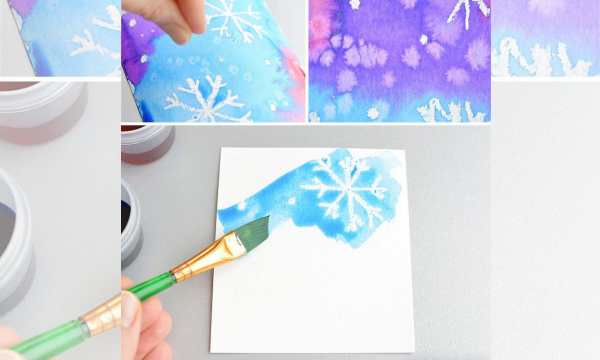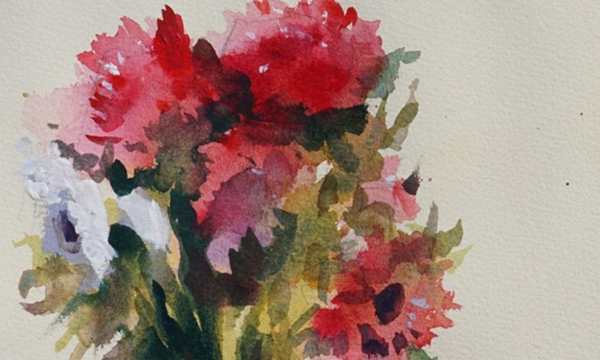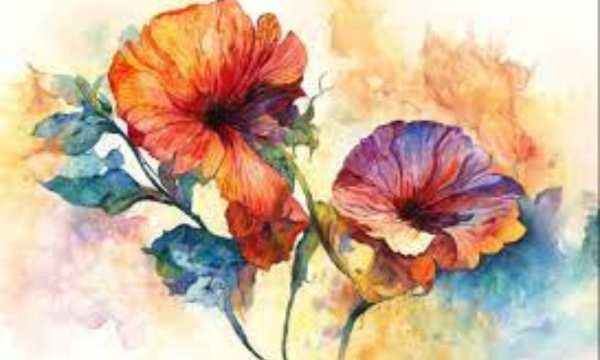Watercolor painting is a delicate and personal art form that requires the right tools to shine. The type of paper you use is one of the most important parts of creating a beautiful watercolor painting.
Ad
Choosing the right watercolor paper can have a big impact on your paintings, as it changes the vibrancy and texture of the colors and how long they last. This complete guide will discuss all the different types of watercolor paper so you can choose the best watercolor paper for your art projects.
Understanding Watercolor Paper
The watercolor paper absorbs and retains moisture, allowing artists to move paint and create beautiful, flowing effects. There are many factors to consider when choosing the best watercolor paper, such as the texture, weight, size, and type of paper.
Ad
1. Texture
- There are three main types of watercolor paper: rough, heat-pressed, and cold-pressed.
- The smooth surface of heat press paper is perfect for fine lines and intricate brush strokes. Heat-pressed paper is often the first choice for artists who prefer clean lines and small details.
- For watercolor artists, cold-pressed paper is the best choice. The surface is slightly structured, making it both smooth and absorbent. Cold-pressed paper can easily be used in many different painting styles.
- The most structured is the rough paper, which has a grainy surface that gives the painting more character. This texture works well with free-form and expressive methods, giving artists more natural and unpredictable results.
- The texture you use depends on your taste and the effect you want to achieve with your art. Try different textures until you find one that suits your style.
2. Weight
- Watercolor paper is available in different weights. Weight is usually measured in pounds (lbs) or grams per square meter (gsm). The thickness and durability of paper depend on its weight.
- Lightweight (90-140 lbs or 190-300 g/m2) are suitable for practicing and sketching, but heavy watercolor washing may cause them to bend or warp.
- Most watercolor artists choose medium weights, ranging from 140 to 260 pounds or 300 to 425 gsm. Because they are flexible and durable at the same time, they will not deform too much.
- Weights greater than or equal to 425 g/m2 are best suited for artists who like to use large amounts of water in their work. This paper does not bend and has a stable surface that allows for very detailed washes.
- When choosing a watercolor paperweight, consider the type of painting you want to create. For more complex and detailed work it is usually best to use heavier weights.
3. Sizing
- Sizing is the process of controlling the amount of pigment absorbed by watercolor paper. There are two ways you can resize things: internally and externally.
- Paper is made with an internal sizing agent that is built in during the production process. Paper with internal sizing absorbs water less quickly, giving you more control over how the paint is applied.
- After the paper is made, the outer size is placed on it. This extra layer makes the paper more water resistant, allowing it to be used in techniques that require large amounts of water.
- It depends on the style of painting you want to do to determine the interior and exterior dimensions. For more control, artists working with large amounts of water can choose paper with both inside and outside dimensions.
Selecting the Right Watercolor Paper for Your Needs
We discuss the most important things you need to know about watercolor paper and some of the best brands. Next, let’s talk about how to choose the right paper for your needs.
1. Consider Your Painting Style
Which type of watercolor paper is best for you largely depends on your preferred painting style. If you like precise and detailed work, heat press paper with a smooth surface may be best for you. For a free and expressive style, rougher paper with more texture can help you be more creative. Cold-pressed paper is a good choice because it is balanced and suitable for different styles.
Ad
2. Assess the Amount of Water Used
The choice of paper weight and size depends on the amount of water you use in your painting. If you don’t need a lot of water, lighter paper will do. But if you like to work with heavy washes and color gradations, you should choose heavier, properly sized paper to prevent paper warping and for better control.
3. Consider File Quality
If you care about how long and how your art will last, choose archival-quality watercolor paper. Acid-free paper made from 100% cotton is less likely to yellow and fall apart over time. Arches, Fabriano, and Saunders Waterford papers are known for their durability and are often used for professional artwork.
4. Try Different Brands
Some brands are known for producing high-quality paper, but which watercolor paper is best for you largely depends on your preference. You may want to try different brands of sample paper to see how the paper feels, how it works with paint, and how it suits your artistic style. It’s important to try different brands because different artists may prefer the vibe of one brand over another.
Conclusion
Finally, choosing the right watercolor paper is a very important choice that can have a big impact on how your artwork turns out. Artists can make choices that suit their preferences and painting style by understanding the subtleties of texture, weight, size, and paper type. When artists paint with watercolors, they can hone their skills and express themselves more fully by exploring different brands and thinking about things like archival quality.
FAQs
1. What are the different textures of watercolor paper?
The texture of watercolor paper changes the feel and look of your painting. Hot-pressed paper is smooth and suitable for fine details, while cold-pressed paper has a medium texture and is suitable for a variety of styles. Rough paper has a rough surface that allows you to use more expressive techniques.
2. How does the weight of watercolor paper affect my art?
The thickness and durability of watercolor paper are determined by its weight, measured in pounds (lbs) or grams per square meter (gsm). The lighter weight is suitable for sketching, while the heavier weight does not distort and is ideal for paintings with lots of detail or layering.
3. What does watercolor paper size mean and why is it important?
Sizing is the process of controlling the amount of pigment absorbed by watercolor paper. When you create something, you add interior dimensions and then exterior dimensions. When the paper is the right size, it absorbs water less quickly, giving you more control over how you paint.
4. Which brands of watercolor paper are of good quality?
Arches, Winsor & Newton, Fabriano, Saunders Waterford, and Strathmore are some of the well-known brands. These brands have paper in many different textures, weights, and archival qualities, so there is paper for every artist.
5. What is the difference between raw watercolor paper, hot-pressed watercolor paper, and cold-pressed watercolor paper?
From smooth to rough, from hot-pressed to cold-pressed, the surface of hot-pressed paper is the smoothest. Artists choose based on their preferred painting style: hot pressing is best for fine details, cold pressing is more flexible, and rough is best for natural and expressive effects.
6. How do I choose the best watercolor paper for the way I paint?
Think about your painting style. If you like to draw a lot of details, choose smooth heat press paper. If you want to use free and expressive techniques, choose rough or cold-pressed paper. Trying different brands and textures will help you find the right fit.


